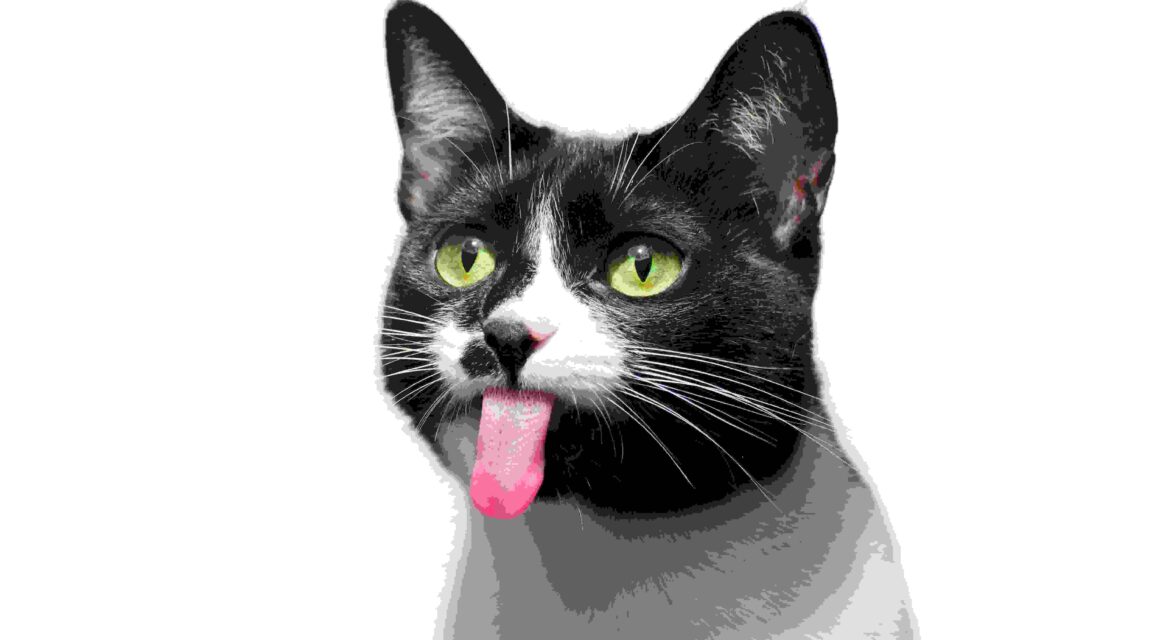If you have ever seen your cat sitting still with the very tip of its tongue peeking out, you are not alone, and you have just witnessed something called a “cat blep.” This cute and sometimes hilarious phenomenon has since flooded social media, making all cat lovers happy. But just what is a cat blep, and why do our feline friends pull the face?
In this post, we’ll be taking a look at the meaning of a cat blep, the science and reasons behind it, whether it’s something to be worried about, and a few amusing facts that you likely weren’t aware of. So, here we go, into the curious world of feline tongue gaffes!
What is a Cat Blep?
A Catural Blep: when a cat’s tongue is sticking out from their mouth in between, normally just the tip, and it sticks there without the cat being aware of it. It is not a complete yawn or a pant. It is merely a small glimpse of the tongue. Blep was a colloquial term on the internet that was added to the writers’ room of pet lovers and meme creators.
Though the blep has been known to strike in other animals’ lives (dogs, lizards, that one known goat), it appears that cats are the most adept and, shall we say, cunning? Of all the accidental blepers.
Why Do Cats Blep?
Just what causes a cat to be all tongue-tangled anyway? Here are the top theories:
Relaxation or Zoning Out
Cats are remarkably skilled in the art of relaxation and will often enter a trance-like state once they are comfortable and settled. During these temporary times, they may accidentally have their tongue dangling out. It’s the equivalent of a person drooling on a pillow in their sleep, completely unintentional and harmless.
Dental or Jaw Structure
Cats that have missing teeth, especially the front ones, are also more likely to blep. The teeth help keep the tongue in place; without them, it’s easier for the tongue to slip out. Some flat-faced breeds are particularly at risk, including Persians and Exotic Shorthairs, due to the structure of their jaw.
The Flehmen Reaction = Smelling the Air (Tasting the Atmosphere)
On other occasions, a cat may extend its tongue to ‘taste’ interesting smells with its Jacobson’s organ (also called the vomeronasal organ) situated on the roof of its mouth. It’s more pronounced when a cat is responding to pheromones or other potent aromas.
Cooling Down
Cats might blep in the warmer months as a way of slightly regulating their body temperature. Unlike dogs, which pant, cats may rarely stick out their tongues to cool down, but this is rare, and only in the most extreme heat.
Leftover Grooming Behavior
However, after grooming, cats sometimes simply let their tongue sit half in, half out. This is probably the second most common reason a cat is bleping. The residual grooming blep is especially adorable and meme-worthy.
When is a Cat Blep a Concern?
Most of the time, cat bleps are totally benign and just very cute, but there are a few cases where they might be a sign of a problem:
Dental issues: If a cat is suffering from swollen gums, broken teeth or mouth pain, it might stick its tongue out.
Underlying neurological problems: In some cases, blepharitis may be a symptom of nerve damage or a neurological issue.
Dehydration or heat: Cats suffering from heatstroke may pant or breathe heavily.
If your cat is bleeding frequently, along with other symptoms such as drooling, smelly breath, changes in appetite, or lethargy, it’s a good idea to check in with your veterinarian.
The Science of the Cat Tongue
The feline tongue is studded with small, rear-facing barbs called papillae, which serve to help cats groom themselves and descale the skin and meat. These barbs are composed of keratin, the same protein found in human fingernails, and are essential for hygiene and eating.
When your cat bleps, you might even catch a glimpse of this textured surface. Although it may look silly, it’s a glimpse into one of the most important grooming tools your pet has.
Cat Blep vs. Cat Mlem: What’s the Difference?
Another beloved internet word is “mlem,” which refers to the movement of a cat extending and reeling in its tongue, often when licking. A blep is a type of furniture development—the tongue is out and it’s not going back in. A mlem is, in some sense, a more active and constant act than a blep.
Consider a blep a cat live-streaming its derpitude, and a mlem as part of its grooming or eating routine.
Cat Blep Trend on the Internet
Type in #catblep on Instagram or TikTok, and you’ll come across thousands of photos and videos documenting the derpiest, tongue-out cat moments. A few of these cats have even gone viral or racked up huge followings just by sitting there in their iconic Belp faces.
It’s little wonder that bleps have inspired memes, GIFs, mugs, T-shirts, and calendars, giving new meaning to the phrase ‘cat culture with darkness at heart,’ as if bleps have become an anthropological totem for feline charm and internet humor.
How to Take an Awesome Blep Photo?
Trying to capture the perfect ‘blep’ shot of your cat for Instagram? Here are some tips:
Waiting after meal or grooming time – After meal or grooming time is the best time for rotating, because cats are more likely to blep during or after these times.
Use burst mode — Because a blep can last just a few seconds, use your phone’s burst mode to capture several frames.
Distract with a toy – Capture their focus while their tongue is out for a cute moment.
Slip the camera in a pocket – Some of the best moments come when you least expect them.
Fun Facts About Cat Bleps
Cats aren’t the only beings that blep. Dogs, goats, or even snakes can do this.
Blepharitis can be genetic. Certain breeds are more prone to tongue slips due to their skull shape.
A blep is not an insult. It’s not an indication that your cat is sick, however; rather, it means that your cat feels secure enough to let its guard down.
Older cats may blep more. Blepharospasm may be more frequent as the mouth and jaw become flaccid with age.
Conclusion
A cat blep is just one of those little cute things that come with the territory. While it’s generally just an adorable quirk, it can also be a subtle clue into your cat’s comfort, mood, or health. So the next time you find your furry friend in mid-blep, take a photo and appreciate the strange little gift that is their tongue peek.
But whether you’re a cat enthusiast or an experienced cat owner, the cat blep is another example of how little details can inspire the best smiles.
FAQs
Is a cat blep normal?
Yes! Nine times out of ten, cat bleps are normal, and they can occur when a cat is relaxed or distracted.
Should I be concerned if my cat bleps frequently?
If the bleping is chronic and accompanied by other symptoms, such as drooling, pain, or loss of appetite, see a vet.
Why do certain cats blep more than others?
Breed, age, dental health, and facial anatomy all come into play. Flat-faced or toothless cats often blep more frequently.





